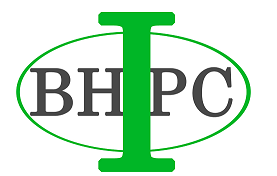2017 Annual Meeting
On Thursday, August 1st, and Friday, August 2nd, the 2017 IBHPC
Annual Meeting was held in Burlington, Vermont, at the University of Vermont
Alumni House and Hilton Garden Inn. The meeting brought together members of the
Executive Team, Co-Investigators, Consultants, Cluster Site Leaders, Patient
Partners, and staff from PCORI (our funders).
This was a chance for those involved with the project to meet face to face and exchange ideas, concerns, and tips as we review the experiences of our Vanguard sites and prepare to deliver the intervention at experimental sites that will soon be randomized. The meeting was also an opportunity to bring the participants to the Green Mountain State to see a glorious New England summer and take inspiration from the natural beauty of Vermont.
This was a chance for those involved with the project to meet face to face and exchange ideas, concerns, and tips as we review the experiences of our Vanguard sites and prepare to deliver the intervention at experimental sites that will soon be randomized. The meeting was also an opportunity to bring the participants to the Green Mountain State to see a glorious New England summer and take inspiration from the natural beauty of Vermont.
After opening remarks from Rodger Kessler, we heard
progress reports from Ben Littenberg and Connie van Eeghen. Gail Rose then
introduced members of the two Vanguard sites who reported on their experiences
with the intervention so far. Much discussion ensued, including clarification
of the role of cluster leader and suggestions for improvements to make with the
randomized sites.
The remainder of Thursday was devoted to two separate
working groups, which attendees self-selected into according to their interests:
1) Lean Intervention Development, and 2) Site Management.
The Lean Intervention Development team reviewed issues
related to the Stage 2 Planning Workbook, one of the key elements of the
intervention.
The Site Management team further subdivided into groups
focused on a) responsibilities and specific steps involved once a site is
randomized to the intervention; b) the IBHPC curriculum; c) patient engagement
on IBHPC planning groups, and d) development of an Aim 3 analytic strategy.
Day 2 opened with a lively discussion about the composition
of “Community Panels” at the clinic sites and how this may affect outcomes of
the research. We also had a workshop by Kari Stephens regarding Core Elements
of integrated care. In small groups, attendees were asked to consider which
aspects of several definitions of integrated, patient-oriented, and behavioral
health care were central to our meaning of integrated care, vs. simply being attributes
of quality primary care.
Please check out the PowerPoint documents for evidence of
our small group hard work!
The general consensus from the meeting was that although
there were still issues needing resolution, the project was on the right track.
The PCORI Representatives mentioned how excited they were to see where the
project was leading and could not wait for randomization to begin. Then, just
like the local children seen outside the venue’s windows, the participants
scampered out into the sun to enjoy a beautiful Vermont summer afternoon. A
productive meeting that left all involved energized and inspired to kick this
project into drive!
Follow-ups to the August meeting,
as of December 13, 2017
- Randomization status: 15 practices have been randomized.
- Lean Intervention Development: The Stage 2 Planning Workbook has been completed and is being trialed in the Vanguard sites.
- Start Up: The Start Up Guide is in use by randomized practices. Cluster leaders have been meeting regularly to refine their role with the sites with respect to the intervention and research aspects of the initiative. Kari Stephens is drafting a Leadership Manual for cluster leaders to reference as their sites get randomized and begin preparations for the initiative.
- Patient Partners: Jen Lavoie is writing a Patient Engagement Guide to orient practices and patients as they collaborate on the redesign process.
- IBHPC curriculum: The migration from Blackboard to Canvas learning management system is complete. Final versions of all modules will be available on Canvas by the end of the year.
- Aim 3 design and analysis: Abby Crocker has been working with the Executive Team and IBHPC consultants to design a plan for data collection and analysis that allows us to explore how contextual factors affect the implementation and patient-centeredness of integrated BH care.
Stay tuned for more outcomes resulting from the great issues
that came up in August!
-Gail Rose
-Gail Rose

